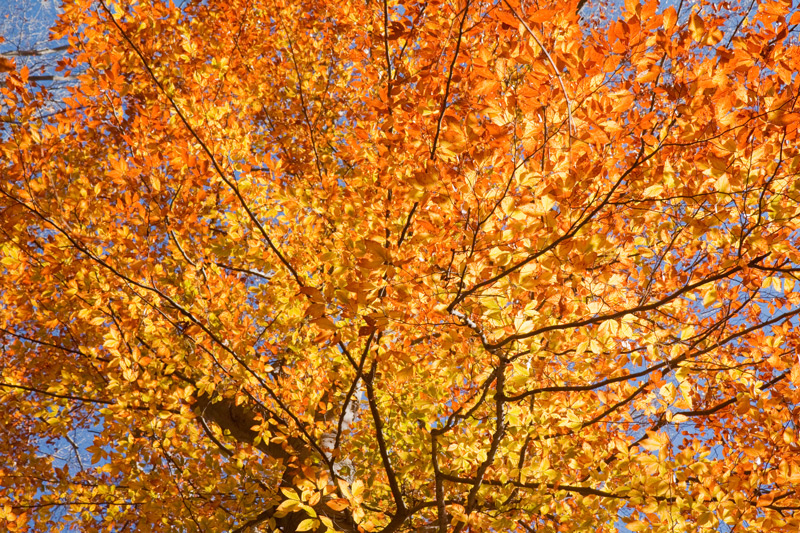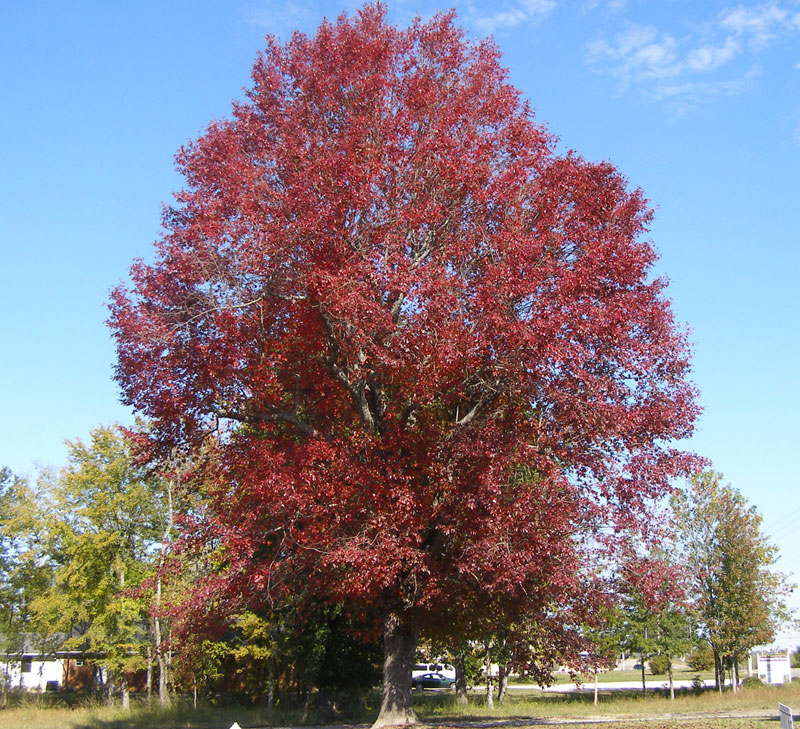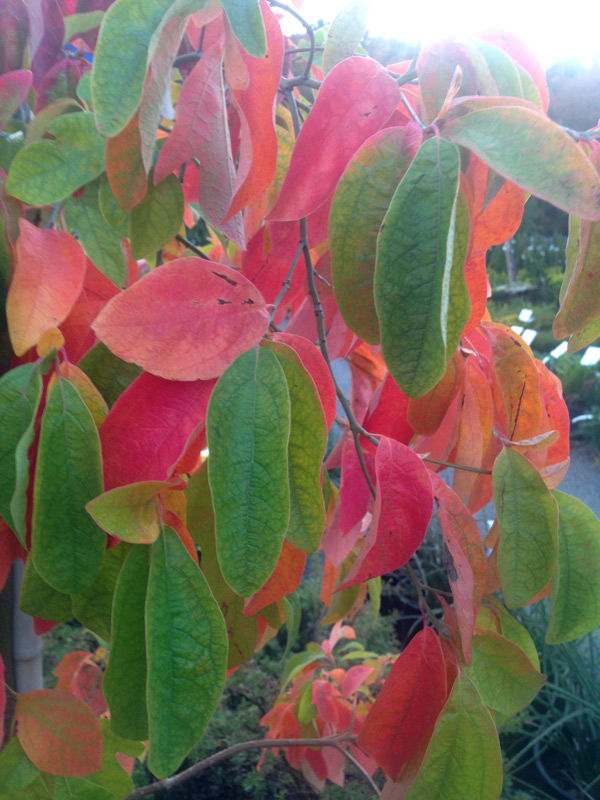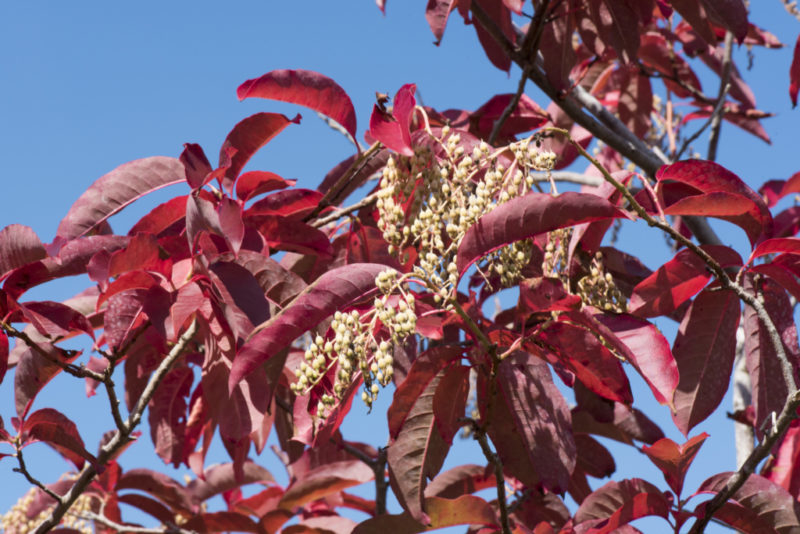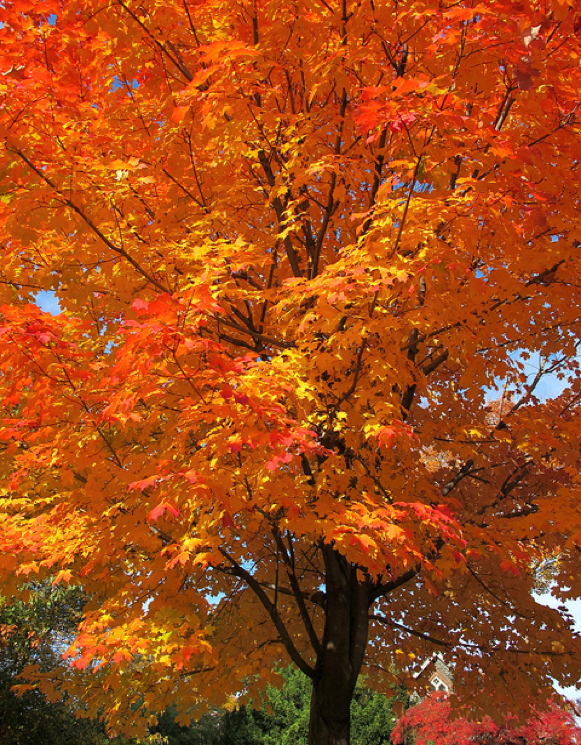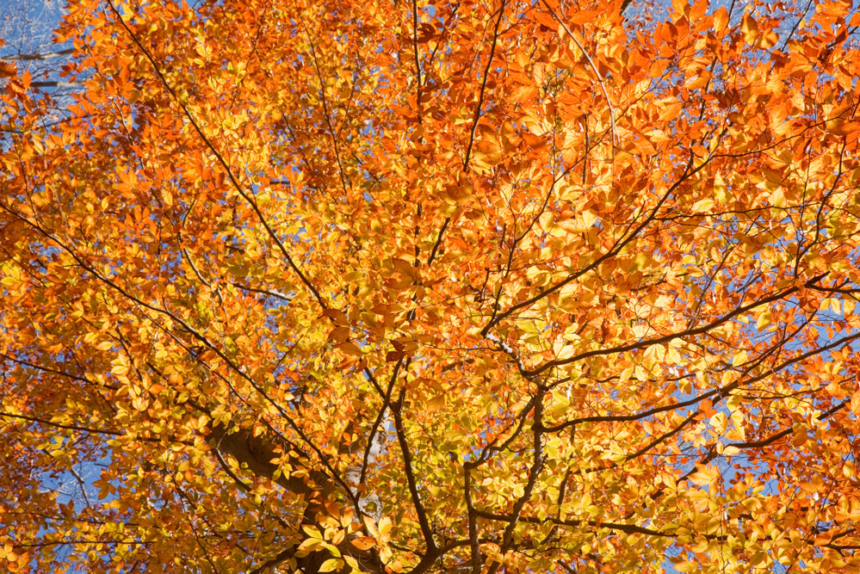
Fantastic Fall Foliage: Native Trees
This post was originally published in September of 2017
Fall is my favorite season of the year. The changing weather transforms trees and shrubs from bright green into a vibrant combination of orange, red and yellow. As this beautiful scene of color works its way across the landscape of our region, many customers come in wanting to know how they can enjoy beautiful fall foliage at home. One of the best ways to add fall color is by planting native trees. Each of the ones below has its own set of unique characteristics.
American Beech
One of my all-time favorite trees. American beech creates a stunning display each fall with its whitewashed bark and dark yellow foliage. Its foliage fades to a papery light brown or creamy white at the end of the season and remains on the tree through the winter, rustling in the wind and providing visual interest in the garden against the bare branches of other plants. Beech nuts are also a good source of food for animals during the winter.
Blackgum
The vivid contrast between blackgum’s dark bark (almost black when wet) and vivid red or orange fall foliage creates a jaw-dropping fall display. This slow growing over story tree can reach 70 feet and is very strong. One of my favorite trees at our Fair Oaks location is an enormous blackgum that is surrounded by our parking lot. We literally drive directly over its root system every day and it’s still thriving!
Sassafras
Sassafras is most notable for its display of orange, green, yellow and red foliage all on the same tree. As the foliage changes color, these trees may look like an artist threw several colors of paint over their leaves. They are also well known for their fragrance. A fun fact about this tree: it is used in making root beer!
Silky Dogwood
Red on one side and white on the other, the foliage of silky dogwood creates a display of flickering colors as it moves in the fall breeze. After its foliage fades, the vibrant red color of new stems and branches provides winter interest. Older bark turns grey, but you can trim your dogwood back each season to keep the new growth coming, as it will grow very quickly.
Sourwood
As fall arrives sourwood’s foliage turns yellow, then orange, and finally brilliant red. This is an excellent tree to pair with evergreens as the red foliage contrasts the deep green of evergreen to enhance the color of both plants. A two-season tree, sourwood also produces fragrant flowers in spring when it leafs out. Maxing out around 20 feet high, sourwood is a good choice for anyone looking for a large impact in a limited space.
Sugar Maple
A classic fall foliage tree, you can’t go wrong with sugar maple in your landscape. With a nice rounded look and a maximum height of 60 to 80 feet, the yellow, dark green and orange fall foliage make this tree a stunning addition to any landscape. It typically takes on a more orange color than its other maple relatives, so if you love orange foliage, this is good choice!
Source: Fine Gardening
Winterthur Viburnum
The most remarkable aspect of Winterthur viburnum is its berries, which come in a light pink and fade to dark pink and later blue as they mature. When most of the berries are blue, the foliage also transitions to vibrant red, creating a stunning contrast between the plants’ foliage and fruits. In the spring, this viburnum blooms with white clusters of flowers as it leafs out. I recommend pairing it with grasses and evergreen for a beautiful combination of texture and contrasting green color in fall.


